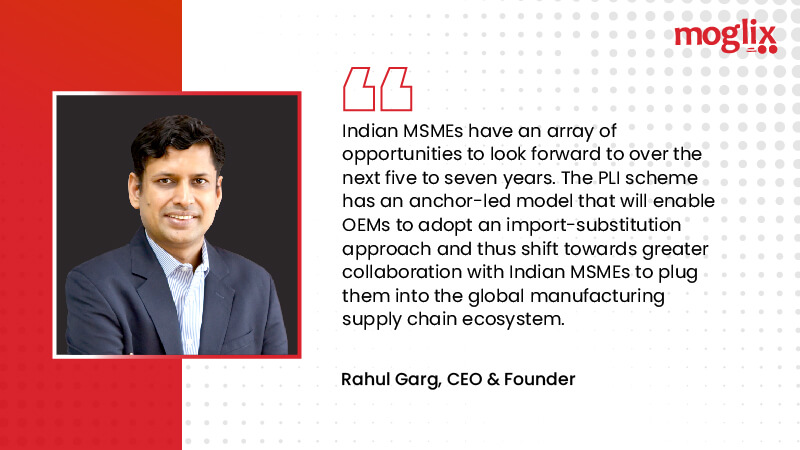The PLI scheme will facilitate bulk order generation for MSMEs

The manufacturing supply chain in India is witnessing a rebound within a year of the announcement of the Productivity Linked Incentive scheme for 13 sub-sectors. Envisaged at an outlay of Rs 145,000 crores, the scheme is expected to recharge job growth and manufacturing output. It has already attracted investment proposals worth Rs 5100 crores in pharmaceuticals and another Rs 11000 crores in large-scale electronics manufacturing. These numbers reflect a robust takeoff for the scheme despite a very challenging business climate due to the pandemic.
Indian MSMEs have an array of opportunities to look forward to over the next five to seven years. The PLI scheme has an anchor-led model that will enable OEMs to adopt an import-substitution approach and thus shift towards greater collaboration with Indian MSMEs to plug them into the global manufacturing supply chain ecosystem.
Backward Linkages Will Pass-Through Incentives to MSMEs
The PLI scheme envisages an annual increment in sales of goods made in India and minimum capital investment caps as the two factors for identifying the beneficiaries. The uniqueness of the PLI scheme’s systemic design will nudge large OEMs towards local sourcing for greater “Made in India” capacity utilization of Indian MSMEs and foster strong OEM-MSME partnerships. The supply chain collaboration will ensure a pass-through of the 4-6 percent cost cushion to MSMEs in the short-term, helping them develop cost competitiveness in the long run.
